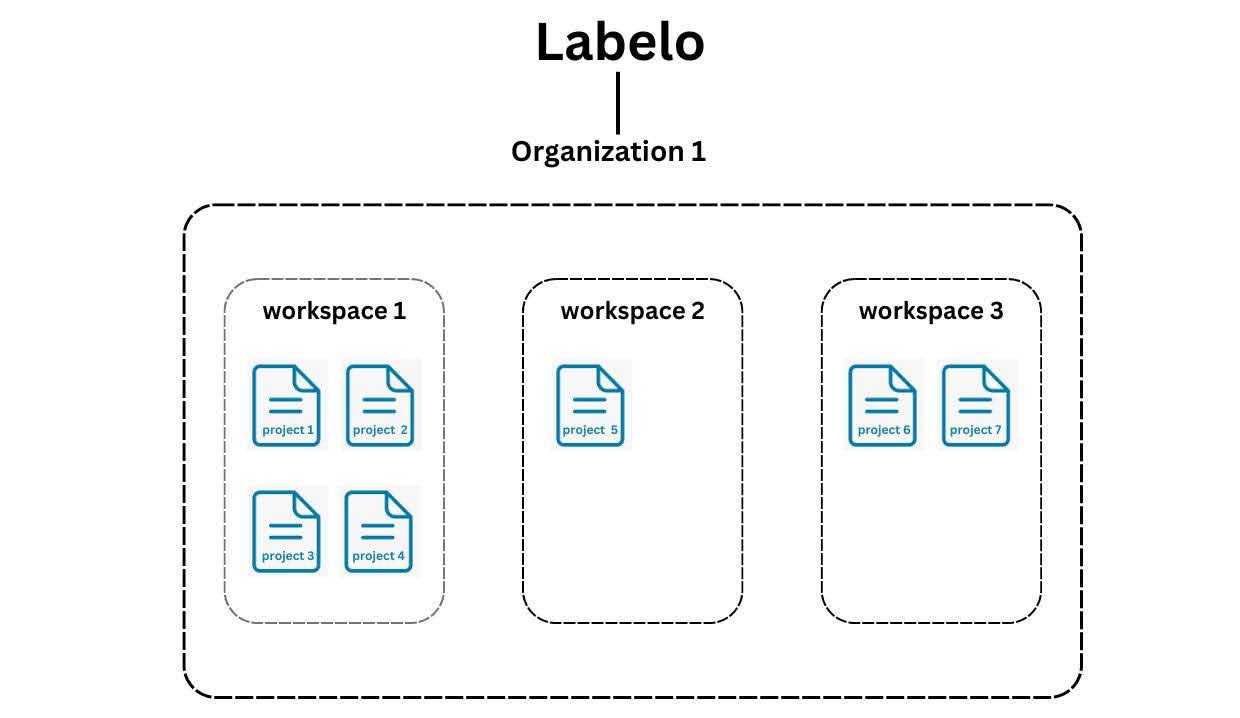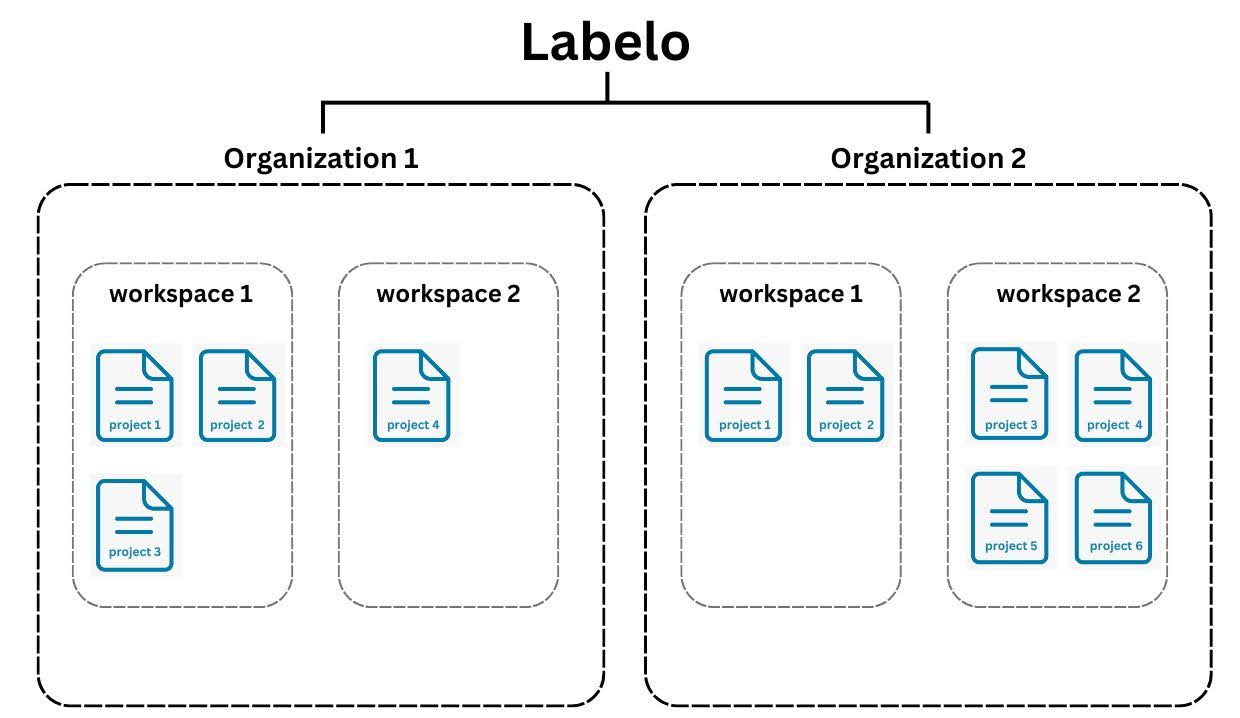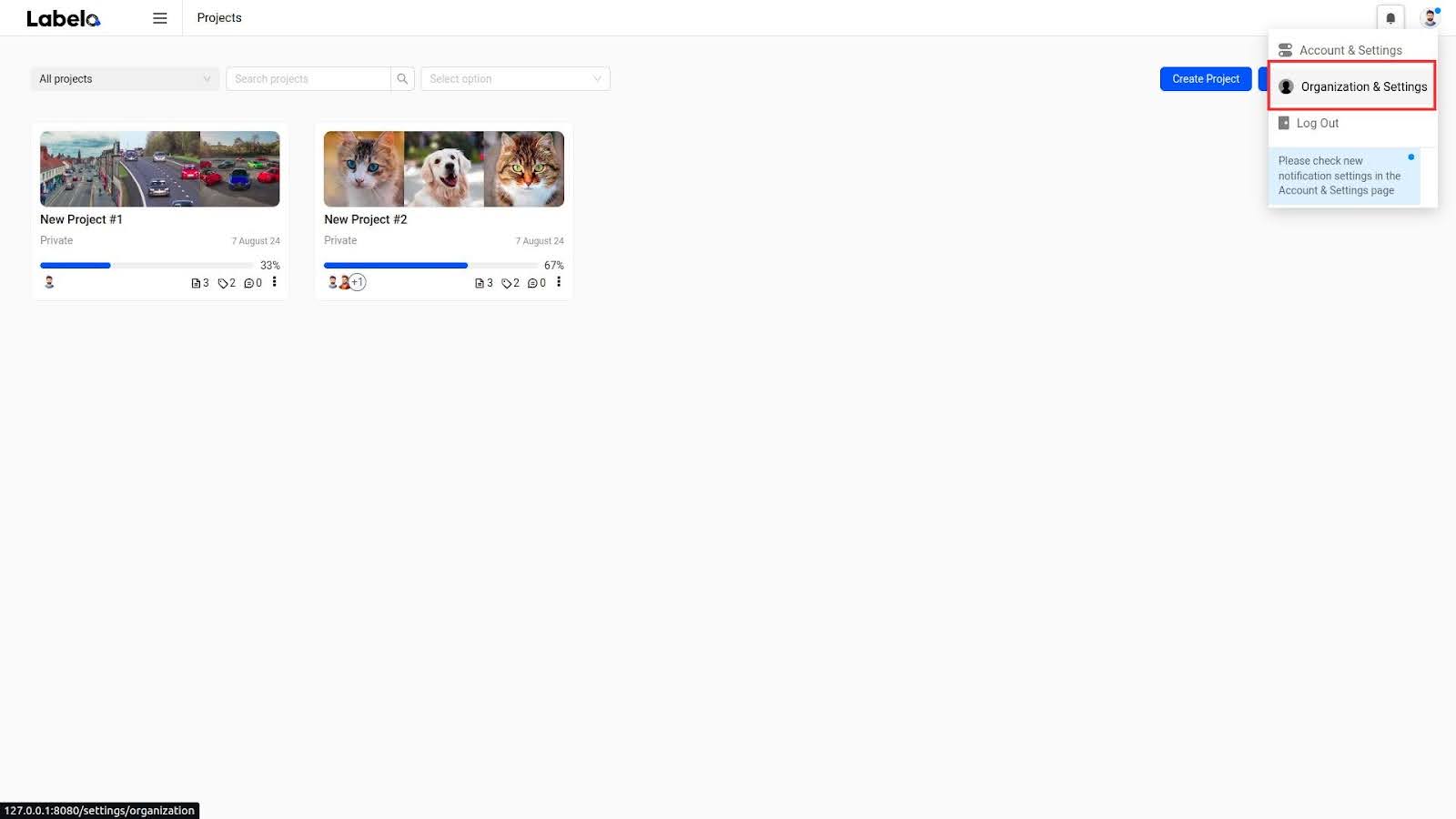Organization Management in Labelo
The Organization feature in Labelo is designed to offer enhanced flexibility and control over project management, making it easy to manage multiple organizations with distinct roles and access permissions. This feature allows users to participate in various organizations, each having customized roles, such as Owner, Administrator, Manager, Annotator, and Reviewer. These roles ensure that each user's responsibilities are clearly defined, enhancing productivity and control over projects.
Role-Based Access Control
Labelo's role-based access control system allows users to assume different roles across multiple organizations. For example, a user may be an Annotator in one organization and a Manager in another, enabling them to contribute based on their expertise while maintaining flexibility in handling different responsibilities. This system ensures that project access and user permissions are tailored to each role, facilitating seamless collaboration across projects.
Organizing Projects Across Departments

Labelo supports creating distinct organizations to manage work for separate departments. If collaboration between departments is required, the Workspace feature within an organization allows each team to maintain its own projects while working together. For instance, both the Computer Vision Department and the Natural Language Processing Department can create separate workspaces for their projects within a single organization, ensuring clear division while fostering collaboration.

Example workspaces:
- Computer Vision Department: Object Detection, Image Classification, Segmentation.
- Natural Language Processing Department: Sentiment Analysis, Named Entity Recognition, Text Generation.
Managing Multiple Organizations
Labelo's multi-organization functionality gives users the ability to:
- Create new organizations.
- Delete existing organizations (for Owners).
- Switch between organizations effortlessly.
This adaptability allows teams to efficiently manage several departments or evolving projects. For instance, a user may have one organization for Machine Learning Research and another for Customer Support Automation. Within each, users can create specialized workspaces tailored to different machine learning tasks or research areas.

Automatic Organization Creation Upon Signup
When users sign up for Labelo, an organization is automatically created and associated with their account. During signup, users can assign a name to their organization, becoming the Owner by default. As an Owner, users have full administrative control over the organization's settings, including the ability to manage users, assign roles, and configure project access.
Accessing the Organization Page

To manage organizations, navigate to the Organization page via the main navigation. On this page, you can:
- View the current organization’s details, such as the organization name, members, and your role.
- Create a new organization by clicking the
Create New Organizationbutton. - View a list of all organizations associated with your account.
- Switch active organizations using the dropdown menu.

Users who hold the Owner role will also have the option to delete the organization. Non-owners will instead have the option to leave the organization.
Managing Membership

Organization membership is managed through the Team page. Only users with Owner or Administrator roles have access to this page, allowing them to add or remove users and assign roles within the organization. This system ensures that the right users have appropriate access, promoting secure and organized project management.
The Organization feature in Labelo streamlines project management by providing role-based access controls, multiple organizations, and easy collaboration between departments. With these tools, Labelo ensures that teams can efficiently manage their projects while maintaining proper oversight and organization across all workspaces.